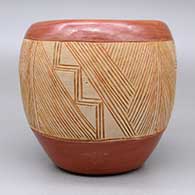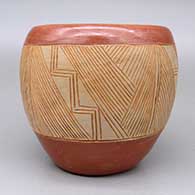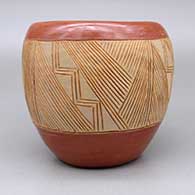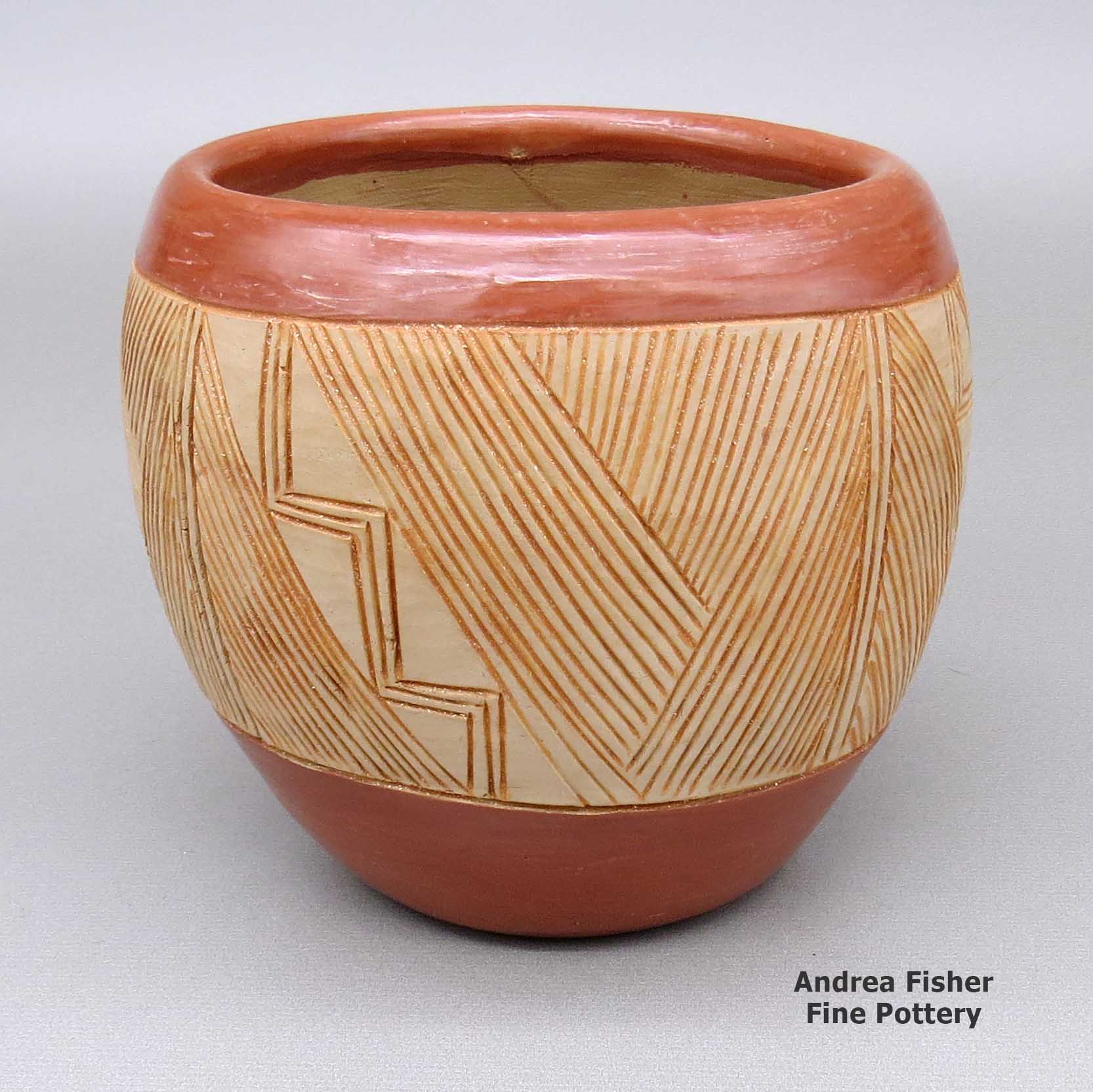
Ohkay Owingeh
$ 375
thsj3k053
Red and micaceous gold Potsuwii jar with a sgraffito geometric design band around sides
4.75 in L by 4.75 in W by 4.5 in H
Condition: Very good, pen marks and sticker residue on bottom and scratches on sides
Signature: Tomasita Montoya
Tell me more! Buy this piece!
(505) 986-1234 - www.andreafisherpottery.com - All Rights Reserved
Tomasita Reyes Montoya
Ohkay Owingeh(San Juan)
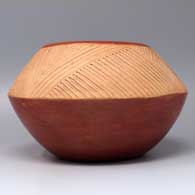
Tomasita Reyes Montoya was born into Ohkay Owingeh in February 1899 and passed on in May 1978. She became of the seven original potters of the Ohkay Owingeh pottery revival in the 1930s. She was active as a potter from the early 1930s until she died. She mostly made incised polychrome redware bowls, jars and vases. Some of those included fine line designs. She also made some micaceous jars and bowls and used micaceous clays to decorate some of her incised pots.
By the early 1930s, most arts and crafts at Ohkay Owingeh had almost died out. In the early 1930s a group of eight women came together to try to revive something. At first they started with embroidery. Then they learned about some pre-contact pottery that had been found in a dig on the west side of the Rio Grande on Ohkay Owingeh land. From that pottery those women distilled a form and style for the making of original Ohkay Owingeh pottery (pre-contact with the Spanish). They named it Potsuwi'i, after the ancient pueblo where it had first been found. Of those original eight women in the group, seven became potters.
As they were growing up, Tomasita taught her daughters, Rosita de Herrera and Dominguita Sisneros Naranjo, how to make Potsuwi'i pottery, too.
Ohkay Owingeh (San Juan)
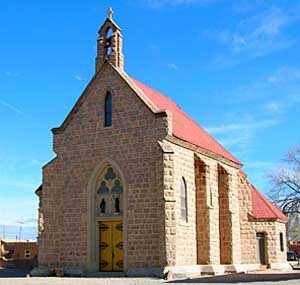
Ohkay Owingeh Mission
In 2005 San Juan Pueblo officially changed its name back to the original name (before the Spanish arrived): Ohkay Owingeh (meaning: Place of the strong people). The pueblo was founded around 1200 AD during the time of the great Southwest drought and migrations. The people speak Tewa and may have come to the Rio Grande area from southwestern Colorado or from the San Luis Valley in central Colorado.
Spanish conquistador Don Juan de Oñate took control of the pueblo in 1598, renaming it San Juan de los Caballeros (after his patron saint, John the Baptist). He established the first Spanish capitol of Nuevo Mexico across the Rio Grande in an area he named San Gabriel. In 1608, the capitol was moved south to an uninhabited area that became the Santa Fe we know today.
After 80 years of progressively deteriorating living conditions under the Spanish, the tribe participated in the Pueblo Revolt of 1680 (one of the revolt's ringleaders, Popé, was an Ohkay Owingeh native) and helped to expel the Spanish from Nuevo Mexico for 12 years. However, when the Spanish returned in 1692 that tribal unity had fallen apart and the individual pueblos were relatively easy for the Spanish to reconquer.
Today, Ohkay Owingeh is the largest Tewa-speaking pueblo (in population and land) but few of the younger generations are interested in carrying on with many of the tribe's traditional arts and crafts (such as the making of pottery). The pueblo is home to the Eight Northern Indian Pueblos Council, the Oke-Oweenge Arts Cooperative, the San Juan Lakes Recreation Area and the Ohkay Casino & Resort. The tribe's Tsay Corporation is one of northern New Mexico's largest private employers.
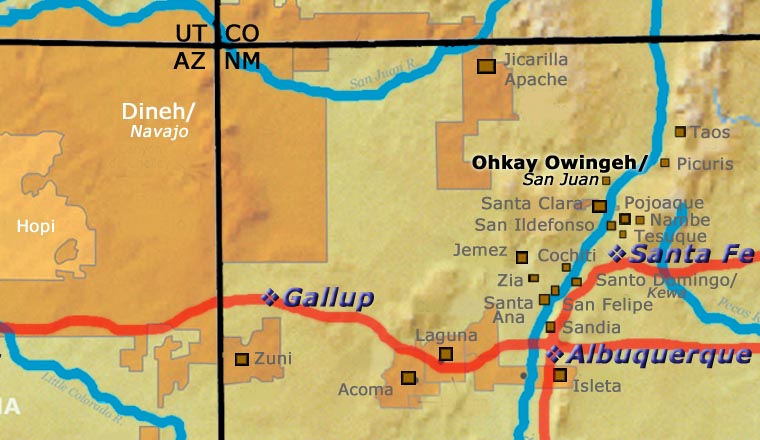
Ohkay Owingeh at Wikipedia
Pueblos of the Rio Grande, Daniel Gibson, ISBN-13:978-1-887896-26-9, Rio Nuevo Publishers, 2001
Micaceous Clay Pottery

Angie Yazzie
Taos
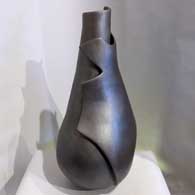
Christine McHorse
Navajo
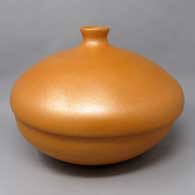
Clarence Cruz
San Juan/Ohkay Owingeh
Micaceous clay pots are the only truly functional Pueblo pottery still being made. Some special micaceous pots can be used directly on the stove or in the oven for cooking. Some are also excellent for food storage. Some people say the best beans and chili they ever tasted were cooked in a micaceous bean pot. Whether you use them for cooking or storage or as additions to your collection of fine art, micaceous clay pots are a beautiful result of centuries of Pueblo pottery making.
Between Taos and Picuris Pueblos is US Hill. Somewhere on US Hill is a mica mine that has been in use for centuries. Excavations of ancient ruins and historic homesteads across the Southwest have found utensils and cooking pots that were made of this clay hundreds of years ago.
Not long ago, though, the making of micaceous pottery was a dying art. There were a couple potters at Taos and at Picuris still making utilitarian pieces but that was it. Then Lonnie Vigil felt the call, returned to Nambe Pueblo from Washington DC and learned to make the pottery he became famous for. His success brought others into the micaceous art marketplace.
Micaceous pots have a beautiful shimmer that comes from the high mica content in the clay. Mica is a composite mineral of aluminum and/or magnesium and various silicates. The Pueblos were using large sheets of translucent mica to make windows prior to the Spaniards arriving. It was the Spanish who brought a technique for making glass. There are eight mica mining areas in northern New Mexico with 54 mines spread among them. Most micaceous clay used in the making of modern Pueblo pottery comes from several different mines near Taos Pueblo.
As we understand it, potters Robert Vigil and Clarence Cruz have said there are two basic kinds of micaceous clay that most potters use. The first kind is extremely micaceous with mica in thick sheets. While the clay and the mica it contains can be broken down to make pottery, that same clay has to be used to form the entire final product. It can be coiled and scraped but that final product will always be thicker, heavier and rougher on the surface. This is the preferred micaceous clay for making utilitarian pottery and utensils. It is essentially waterproof and conducts heat evenly.
The second kind is the preferred micaceous clay for most non-functional fine art pieces. It has less of a mica content with smaller embedded pieces of mica. It is more easily broken down by the potters and more easily made into a slip to cover a base made of other clay. Even as a slip, the mica serves to bond and strengthen everything it touches. The finished product can be thinner and have a smoother surface. As a slip, it can also be used to paint over other colors of clay for added effect. However, these micaceous pots may be a bit more water resistant than other Pueblo pottery but they are not utilitarian and will not survive utilitarian use.
While all micaceous clay from the area of Taos turns golden when fired, it can also be turned black by firing in an oxygen reduction atmosphere. Black fire clouds are also a common element on golden micaceous pottery.
Mica is a relatively common component of clay, it's just not as visible in most. Potters at Hopi, Zuni and Acoma have produced mica-flecked pottery in other colors using finely powdered mica flakes. Some potters at San Ildefonso, Santa Clara, Jemez and San Juan use micaceous slips to add sparkle to their pieces.
Potters from the Jicarilla Apache Nation collect their micaceous clay closer to home in the Jemez Mountains. The makeup of that clay is different and it fires to a less golden/orange color than does Taos clay. Some clay from the Picuris area fires less golden/orange, too. Christine McHorse, a Navajo potter who married into Taos Pueblo, uses various micaceous clays on her pieces depending on what the clay asks of her in the flow of her creating.
There is nothing in the makeup of a micaceous pot that would hinder a good sgraffito artist or light carver from doing her or his thing. There are some who have learned to successfully paint on a micaceous surface. The undecorated sparkly surface in concert with the beauty of simple shapes is a real testament to the artistry of the micaceous potter.
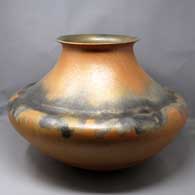
Lonnie Vigil
Nambe
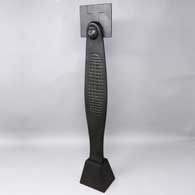
Robert Vigil
Nambe

Preston Duwyenie
Hopi
Tomasita Reyes Montoya Family Tree
Disclaimer: This "family tree" is a best effort on our part to determine who the potters are in this family and arrange them in a generational order. The general information available is questionable so we have tried to show each of these diagrams to living members of each family to get their input and approval, too. This diagram is subject to change should we get better info.
- Tomasita Reyes Montoya (1899-1978) and Juan Reyes Montoya
- Dominguita Naranjo (Sisneros)(1942-) and Juan Sisneros
- Jennifer Sisneros and Alfred E. Naranjo (Santa Clara)
- Alfred J. Naranjo
- Jeannette Teba and Steven Teba Sr.
- Steven Teba Jr.
- Veronica Teba
- Jennifer Sisneros and Alfred E. Naranjo (Santa Clara)
- Rosita de Herrera
- Norman de Herrera
Some of the above info is drawn from Pueblo Indian Pottery, 750 Artist Biographies, by Gregory Schaaf, © 2000, Center for Indigenous Arts & Studies
Other info is derived from personal contacts with family members and through interminable searches of the Internet.
Copyright © 1998-2024 by


